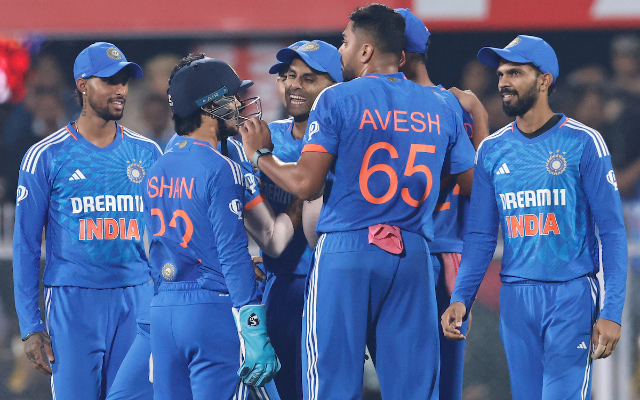
Ruturaj Gaekwad has played four ODIs and 16 T20Is; Tilak Varma one and 12; Rinku Singh zero and seven; Ravi Bishnoi one and 18; Arshdeep Singh three ODIs and 38 T20Is.
Many of them were summoned when the regulars were absent. That way, they were not your first-choice players. Hang on! Are they not your T20 specialists? The kind that India will lean on, looking ahead to next year’s T20 World Cup and beyond?
Like it or not, the answer will have to be in the affirmative. Rohit Sharma, Virat Kohli, Jasprit Bumrah and a few others will most probably be considered for the immediate future. What after that?
The answer lies in the selection of the team for the T20I series against Australia. It’s a bunch picked by default, with the objective of resting the players who were part of the 50-over World Cup process. But looking at the future, India’s T20 outfit has to have specialists.
And that’s what we have got in this team. Almost all the players mentioned, and a few not, have excellent first-class records. They are proven performers in the longest format in the domestic circuit. At the same time, they are T20 experts, having proven their worth in the testing cauldron of the Indian Premier League (IPL).
It’s not a stretch of imagination to say that this is perhaps India’s first-ever T20 team. The one that lost in the semi-final of the T20 World Cup in 2022 played 50-over cricket. This lot is different. They start smashing it from the first ball. This requires a separate set of skills, which the previous generation did not have. Not their fault. They grew up playing a different brand.
The current lot has T20 in their system. That’s what they saw as teenagers. That’s what they wanted to do and trained for. And that’s what they have done with a fair degree of success in whatever opportunities they have got so far. They are intrinsically different. This is something which comes naturally to them, unlike the previous generation which had to apply and adapt for success.
And India have not had a lot of success in this format. After 2007, they reached one T20 World Cup final in 2014 and lost it. Between these two editions and afterwards, it’s largely been a story of a group of players appearing like misfits in a format that demands that players be different. Their approach to being conservative is one explanation. Their thought process not being apt is perhaps a better one.
In Australia last year, the Indians were happy to get 35-0 in six overs of power play. In the ongoing series against Australia, they have made 75 in that period. It makes a telling difference, no matter how much you accelerate after a sedate start. That kind of start can kill your chances, and that’s what happened in successive T20 World Cups. Yashasvi Jaiswal, Gaekwad, Rinku and Verma are cut from different cloth. They don’t adhere to that stereotype.
The same applies to bowling. You don’t need bowlers who can swing the ball late or prodigiously, or spinners with a wide range of skills, who can deceive the batters in flight and fool them with loop. You need guys who can hold their nerve, absorb being struck for successive sixes and still keep trying. Arshdeep, Bishnoi and Axar Patel do not have a lot of variations or guile. They make do with what they have and this minimalistic approach works in T20s because it’s up to the opposition to hit every ball.
In Guwahati on Tuesday, India lost Jaiswal for six and Ishan Kishan for nought. It didn’t deter Gaekwad, who took the total to 80 after 10 overs. There was no chips-are-down-and-hence-we-consolidate business. This is not the brand of T20 their immediate predecessors played. They were taught the values of being circumspect and stuck to the lessons they learnt early.
That has to change for India to become a T20 force. The West Indies of a few years ago are an example. They didn’t bother about other formats and gave T20 their all. In India, it’s different because we treat all formats with respect. While that is how it should be, it’s also important to build teams for three formats with specialists in each of them. There will be overlaps, but you still need to identify who works better when it comes to Tests, ODIs and T20Is.
By picking players who fit the new-age bill, the selectors have taken a step in that direction. It may take time, but this has to be the beginning.




